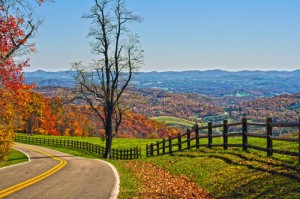Fall brings many great things like colorful foliage, warm, comfy sweaters and pumpkin pies. When it comes to driving, fall brings some unique  dangers. Learn about these dangers so that you can be prepared and stay safe on the road.
dangers. Learn about these dangers so that you can be prepared and stay safe on the road.
Rain
The first few weeks of rain can be the most dangerous, since the water will pool on the oil and dust left on the roadway, leaving the asphalt slippery.
School Traffic
There will be more buses and cars on the roads with kids returning to school in the fall. Increased pedestrian traffic in the mornings and afternoons are of special concern, as children are walking to and from school or their bus stops.
Fog
Fog can limit your visibility and perception of distance a great deal. Drivers commonly make the mistake of using their high beams in fog, but this only makes visibility worse since the high beams will bounce off the fog causing a glare. Use your low beams instead and slow down.
Sun Glare
Common in fall, sun glare can impact your sight even after exposure for several seconds, making it hard to see the car in front of you, pedestrians, and oncoming traffic.
When the sun sets behind you, sun glare can also be a problem, with the sunlight bouncing off your rearview mirror or reflecting off traffic lights ahead. This can make it difficult to see traffic lights and other objects in the road.
Frost
Temperatures can drop quickly at night, leading to morning frost and icy areas on the roadways. This happens frequently on overpasses, bridges, and areas of the road that are shaded.
Deer
There is an increase in deer activity in the fall since it is their time for migration and mating. If you live in an area which has a lot of wildlife, look out for deer darting across the road, especially at night.



![[Facebook]](https://www.fordlincolncharlotte.com/blogs/594/wp-content/plugins/bookmarkify/facebook.png)
![[LinkedIn]](https://www.fordlincolncharlotte.com/blogs/594/wp-content/plugins/bookmarkify/linkedin.png)
![[Twitter]](https://www.fordlincolncharlotte.com/blogs/594/wp-content/plugins/bookmarkify/twitter.png)
![[Yahoo!]](https://www.fordlincolncharlotte.com/blogs/594/wp-content/plugins/bookmarkify/yahoo.png)
![[Email]](https://www.fordlincolncharlotte.com/blogs/594/wp-content/plugins/bookmarkify/email.png)

